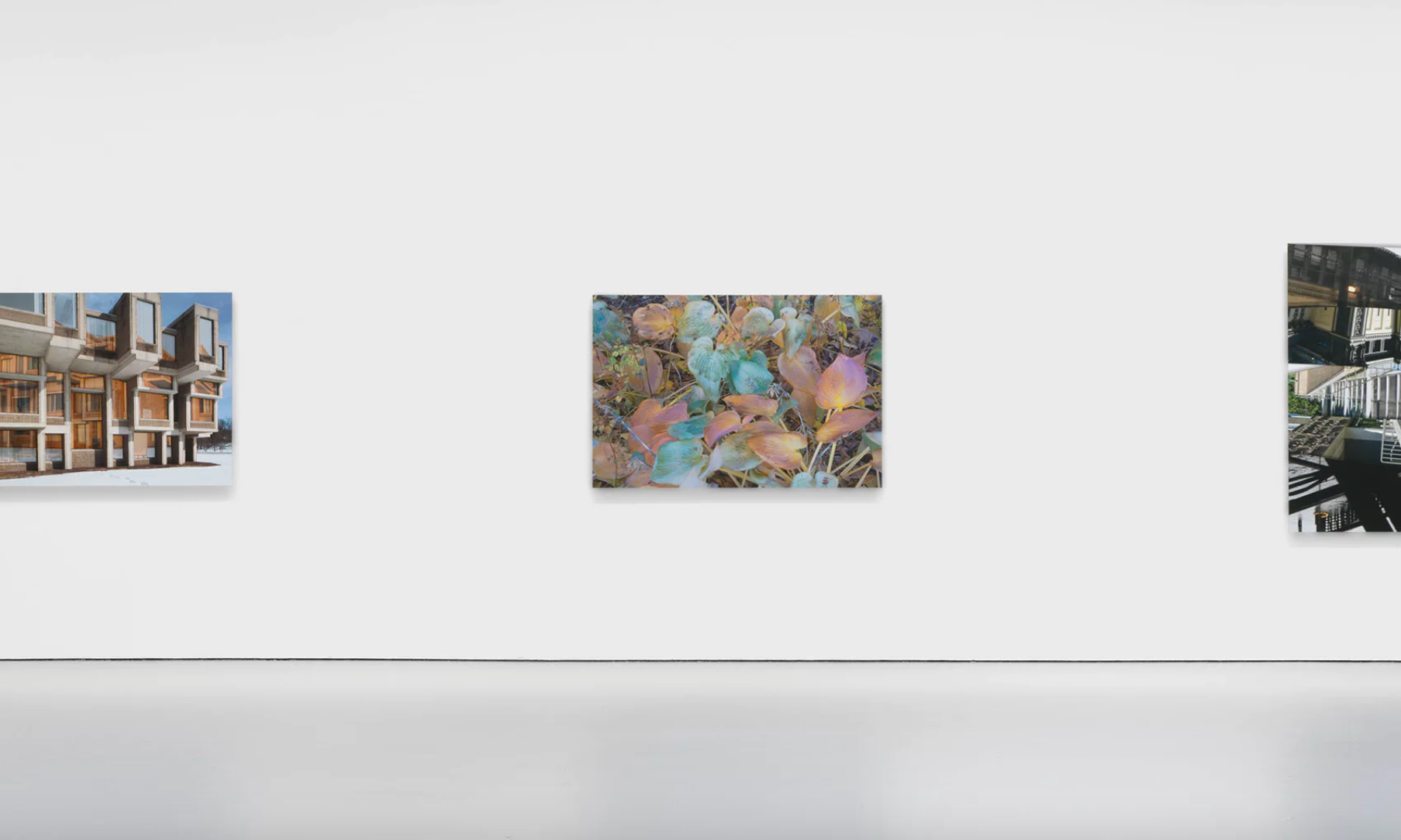Installation view of James Welling: Thought Objects, David Zwirner, New York, 2024
Courtesy of David Zwirner
Despite our collective impulse to snapshot every waking moment and share it on social media, we have yet to see everything. Luckily, we have artists who still have a thing or two to show us.
Consider James Welling and Richard Mosse, photographers who could not be more different. Since at least 2010, Mosse has been and tracking the wilful decimation of our planet by corporate profiteers and the displacement of refugees from war. Welling, a hardcore conceptualist, is more involved in the process of creating an image than documenting its subject. Yet both artists probe the limits of what a photographic image can represent by taking it beyond the visible world.
At the opening for Thought Objects, Welling’s tenth show with David Zwirner gallery, admirers scrutinised his photographs as if they had discovered a whole new medium. Or, as one sharp observer remarked, “It’s amazing to see pictures that no one else has taken.”
That was almost true. Many of us have seen photographs of calla lilies and of Modernist architecture such as Le Corbusier’s Villa Savoye. In Welling’s images, however, they register as vaguely familiar ruins that you can’t quite place, or echoes of an imaginary landscape. I was astonished to see that one work, Pier 24, was not of the startled, upside-down ghost ship that it seemed but of a riverside complex in Chelsea that I knew well.
"That picture inspired this whole series," says Welling, who has fully embraced digital printing tools to conjoin, distort and abstract images that appear to attain sculptural depth and the texture of painting. (He compares the process to dentistry.) In his photographs, Brutalist buildings look like hyperreal intrusions on an alien world. Pictures of flowers, saturated in unreal colour, take on the mystifications of spirit photography.
Bigger than language
Welling uses ultraviolet light to print on aluminium panels that jut from the wall, a technique that frees him from frames, reflective glass and hours in a darkroom. Richard Mosse also works with UV light—specifically to photograph flowers—but in the middle of the night.
That’s what the Irish-born New Yorker was doing in 2018 to “convalesce” from five shattering years of recording the consequential extraction of rare earth minerals by armed bandits in Congo and the migrant crisis in the Middle East. But Mosse could not quiet his internal alarm when Jair Bolsonaro became president of Brazil and accelerated the ecological and human disaster unfolding in the Amazon Basin. Massive areas now look like Hiroshima after the bomb. It’s shocking. But Mosse is an artist, not a muckraker in search of scandal. He went to the Amazon with a small crew determined to “represent the unrepresentable”. For him, that is global warming.
Richard Mosse’s expansive video installation Broken Spectre (2018-22) at Jack Shainman, New York
Photo: Jack Hems
“I wanted to tell a story about climate change that is bigger than our language,” he says. It’s also too big for standard lenses. To make Broken Spectre, the magisterial and harrowing film that is inaugurating Jack Shainman Gallery’s new location in Tribeca, he packed three cameras, including a multispectral video device of his own design that replicates satellites used by scientists to keep up with changes to the environment. Together with an analogue and a UV microscopic camera, Mosse captured what the human eye cannot see on its own.
Global warming is not only poisoning the atmosphere and killing many species of animal, insect and plant in the rainforest but also spreading disease and causing immediate and irreparable harm to millions of displaced indigenous people. One of them, a woman wearing war paint and carrying a spear, directly addresses Mosse’s camera in a spontaneous rant against marauding criminals and a corrupt government that culminates in a gut-wrenching plea for help. It riveted the opening night audience.
It’s one thing to hear about incalculable destruction, another to experience it nearly at first hand. That is the effect of the film’s projection on a 60ft-long LED screen. Though it runs 74 minutes, no one left for a drink at the reception outside the room. People just kept coming in, and stayed, getting their minds blown and their eyes opened.
“The rain forest is an almost lawless place,” Mosse says. “But I’m interested in the cowboy culture of the Trans-Amazon Highway and this libertarian, evangelical spirit of capitalism that humans adopt to dominate and exploit the wilderness they believe God has given them. It has parallels in Western movies, and I wanted to exploit that.”
• James Welling: Thought Objects, until 10 February, David Zwirner Gallery, 533 W 19th St, New York; Richard Mosse: Broken Spectre, until 16 March, Jack Shainman Gallery, 48 Lafayette St, New York

